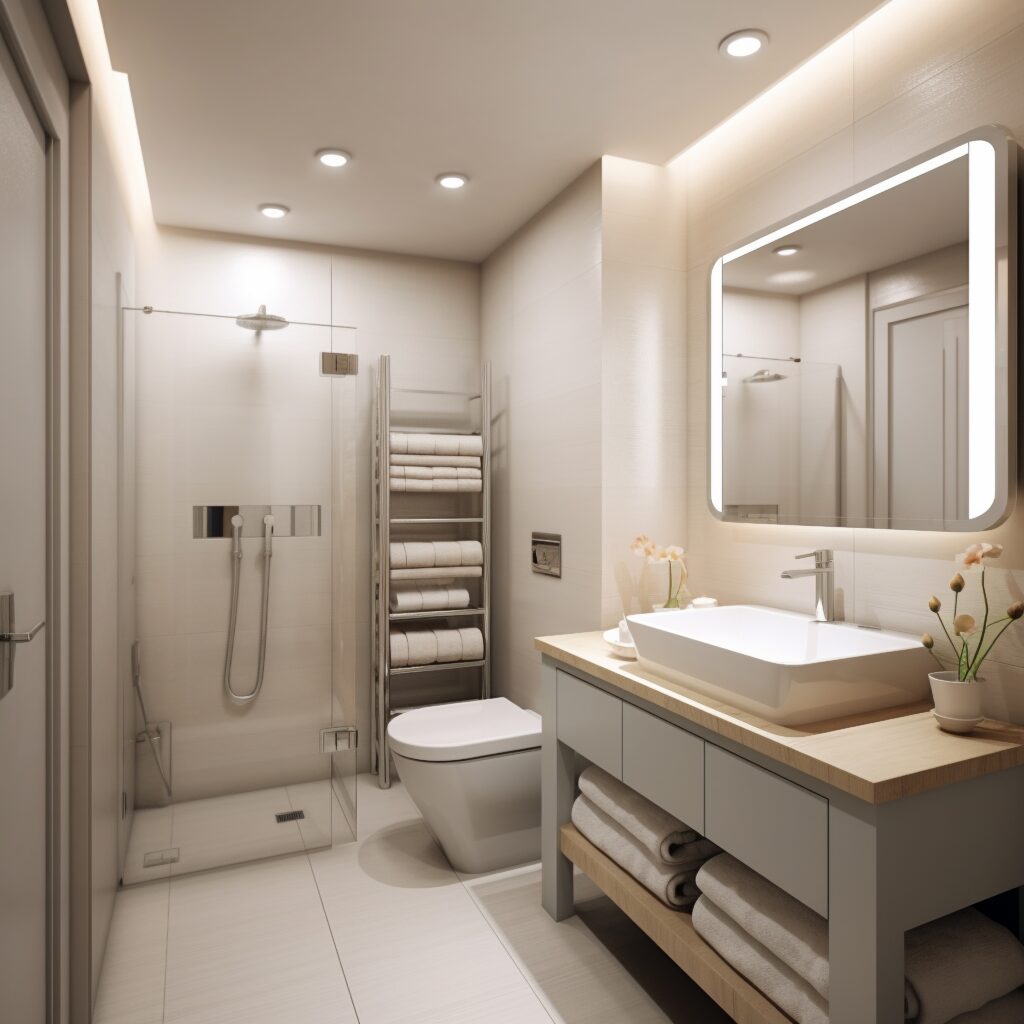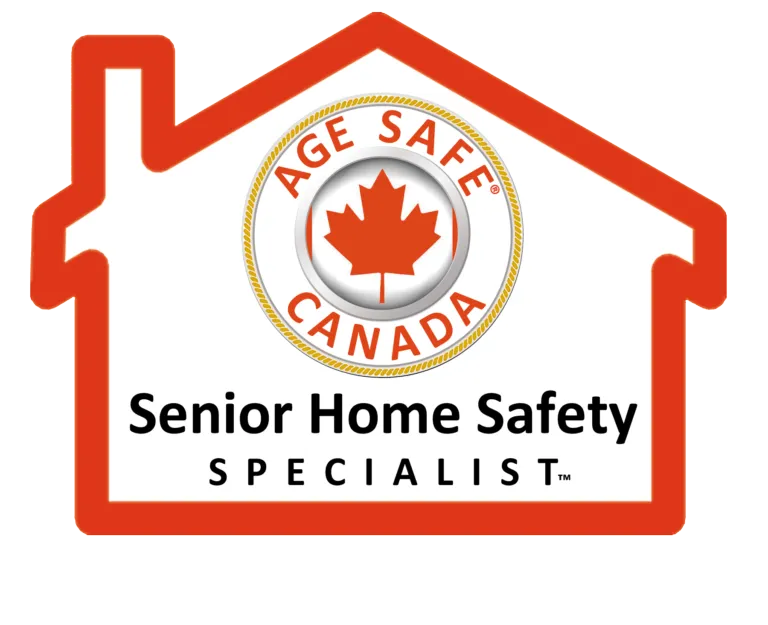Ottawa’s real estate market is witnessing a significant shift, with aging-in-place design becoming a key feature in new and renovated homes. The growing demand for spaces that allow seniors to live comfortably and independently has transformed how developers, architects, and homeowners approach residential design. Features such as wider doorways, zero-step entrances, and especially accessible bathrooms like a well-equipped bathroom for seniors in Ottawa are no longer niche offerings but essential considerations for future-proofing homes.

As Canada’s population ages, the intersection of real estate trends and aging-in-place principles presents a unique opportunity to blend functionality with style. This movement not only caters to seniors but benefits multigenerational families, people with disabilities, and those who prefer lifelong comfort without relocating. The integration of aging-in-place features into Ottawa’s housing landscape is reshaping neighborhoods and redefining community living.
The Demographic Shift Driving Change
Canada’s demographic landscape is evolving rapidly, with seniors representing a growing portion of the population. Ottawa reflects this trend, with an increasing number of residents aged 65 and above opting to remain in their homes as they age. This demographic shift prompts a transformation in real estate demands, favoring properties that accommodate mobility challenges and changing health needs without sacrificing independence.
In response, builders and developers in Ottawa are prioritizing homes designed to support aging-in-place. This includes new constructions built with flexible layouts and adaptable features, as well as renovation projects aiming to retrofit existing homes for enhanced safety and accessibility. The appeal extends beyond seniors themselves—adult children, caregivers, and even investors are recognizing the value of these adaptations.
Key Features of Aging-in-Place Homes in Ottawa
Aging-in-place design embraces a holistic approach, blending safety, accessibility, and comfort seamlessly. Below are some of the prominent features now influencing Ottawa’s real estate market:
1. Accessible Entrances and Pathways
One of the fundamental requirements of aging-in-place homes is barrier-free entryways. Step-free access via ramps or gently sloped pathways ensures ease of movement for those using walkers or wheelchairs. Automatic or easy-to-open doors further reduce obstacles, making daily entry and exit hassle-free.
2. Wider Hallways and Doorways
Ottawa properties embracing aging-in-place frequently include wider hallways and doorways. This modification not only accommodates mobility devices but also enhances overall circulation within the home, creating a spacious, open feel that benefits all residents.
3. Bathroom for Seniors Ottawa: Safety and Convenience
Bathrooms often pose the most significant challenges for seniors due to slippery surfaces, tight spaces, and complicated fixtures. The rise of the bathroom for seniors in Ottawa reflects a growing trend to redesign bathrooms with safety and ease of use in mind. Features such as walk-in showers with grab bars, non-slip flooring, adjustable showerheads, and comfort-height toilets are becoming standard.
Additionally, lever-style faucets replace traditional knobs for easier operation, and built-in seating in showers offers rest and security. Adequate lighting, including motion-sensor nightlights, ensures visibility during nighttime bathroom use.
4. Single-Level Living Spaces
Multi-story homes can become barriers to independence as stairs pose fall risks and accessibility issues. Single-level living arrangements are favored in aging-in-place designs, either through ranch-style homes or multi-floor homes equipped with elevators or stairlifts.
5. Smart Home Technology
Ottawa’s real estate market is also witnessing an infusion of smart home technology aimed at supporting aging residents. Automated lighting, voice-activated controls, security systems, and fall detection devices all enhance safety and convenience, helping seniors live independently longer.
6. Open Floor Plans
Open floor plans improve visibility and movement within the home. Removing unnecessary walls between kitchens, dining rooms, and living areas not only modernizes the space but also allows seniors to navigate more easily and socialize without barriers.
7. Adaptable Kitchens
Kitchens in aging-in-place homes are designed with adjustable-height counters, pull-out shelves, and appliances that can be operated safely and comfortably. These features help maintain autonomy in meal preparation and everyday tasks.
The Influence of Aging-in-Place on Ottawa’s Real Estate Market
Ottawa’s real estate market has historically been shaped by factors such as affordability, proximity to urban amenities, and neighborhood character. Aging-in-place design adds another layer of complexity and opportunity for developers and homeowners alike.
Rising Buyer Awareness and Demand
Buyers are increasingly educated about the benefits of aging-in-place homes. Families planning for the future seek homes that will accommodate changing needs without the need for costly moves. This awareness drives demand for accessible homes, prompting builders to incorporate these features as standard rather than optional.
Higher Property Value and Market Appeal
Homes featuring aging-in-place design elements often command higher market value. They appeal to a broad demographic, including seniors, disabled individuals, and families with young children. The adaptability and safety features also position these properties as more desirable and resilient investments over time.
Retrofitting Existing Homes
Given Ottawa’s diverse housing stock, many older homes are being retrofitted to meet aging-in-place standards. This renovation trend stimulates local economies and encourages sustainability by extending the life and usability of existing properties. Retrofit projects may involve installing ramps, widening doorways, or modernizing bathrooms and kitchens to be more accessible.
Challenges and Considerations in Implementing Aging-in-Place Designs
Despite the clear benefits, several challenges accompany the integration of aging-in-place features in Ottawa’s real estate sector.
Balancing Aesthetics and Functionality
One challenge is achieving a balance between functionality and aesthetic appeal. Aging-in-place features must be discreet yet effective, blending with modern design trends. Buyers often want homes that feel stylish and comfortable without feeling clinical or institutional.
Cost Implications
While aging-in-place features add value, initial costs can be a concern, especially in retrofits. Builders and homeowners must weigh the long-term benefits of increased safety and marketability against upfront expenses. Innovative design and material choices can help manage costs.
Zoning and Building Regulations
Compliance with municipal zoning laws and building codes adds another layer of complexity. Ottawa’s regulations must be carefully navigated to ensure that accessibility modifications meet legal standards while fitting within neighborhood guidelines.
Educating Industry Professionals
Real estate agents, architects, and contractors need specialized knowledge to properly advise clients about aging-in-place options. The evolution of this market segment calls for ongoing professional development and collaboration across disciplines.
Spotlight on Community and Neighborhood Planning
Aging-in-place extends beyond individual homes. Ottawa’s urban planning is increasingly focused on creating neighborhoods that support seniors’ mobility and social inclusion.
Walkable Communities
Proximity to amenities, parks, healthcare, and public transit is critical. Communities designed for walkability promote independence and well-being for aging residents. Mixed-use developments that integrate residential, retail, and recreational spaces foster connectivity.
Social Spaces and Support Networks
Designing common areas and community centers where seniors can gather encourages social interaction and reduces isolation. Support networks embedded within neighborhoods enhance quality of life and provide resources as needs evolve.
Public Transit and Mobility Infrastructure
Accessible public transit options and safe pedestrian pathways are integral to aging-in-place. Ottawa’s investment in accessible buses, sidewalks, and crosswalks reflects this commitment to inclusivity.
The Role of Technology in Aging-in-Place Homes
Technology continues to transform the possibilities for aging-in-place living in Ottawa’s real estate market.
Health Monitoring Systems
Integrated health monitoring devices can track vital signs and detect emergencies, alerting caregivers or medical professionals promptly. These systems increase peace of mind for seniors and their families.
Home Automation for Convenience and Safety
Smart thermostats, lighting, and security systems controlled via smartphone or voice commands reduce the physical effort needed for daily tasks and enhance home security.
Telehealth Integration
Homes equipped to support telehealth consultations reduce the need for travel and improve access to medical care. This is especially relevant in Ottawa’s more remote or suburban areas.
Emergency Response Features
Wearable devices and in-home sensors detect falls or unusual activity, triggering immediate assistance. These features empower seniors to maintain independence while ensuring help is available if needed.
Future Outlook for Aging-in-Place in Ottawa
The momentum toward aging-in-place design is expected to accelerate. As awareness grows and technology advances, homes will increasingly become tailored to individual lifestyles and health needs. Ottawa’s real estate landscape will continue to evolve, placing inclusivity, comfort, and safety at the forefront.
Developers, policymakers, and community leaders have an opportunity to shape this future collaboratively. Investment in accessible infrastructure, incentives for aging-in-place renovations, and education for industry professionals will be pivotal.
Why Choose Adaptive Living?
Adaptive Living stands at the forefront of aging-in-place design, committed to creating homes that empower individuals to live independently and comfortably throughout their lives. Our expertise lies in blending innovative solutions with practical, elegant designs tailored to the unique needs of Ottawa’s residents.
Choosing Adaptive Living means partnering with a team dedicated to enhancing quality of life through accessible, adaptable, and stylish living environments. From customized bathroom renovations to full home adaptations, we prioritize safety, convenience, and dignity in every project.
With Adaptive Living, your home becomes a sanctuary designed to support your evolving needs, ensuring that aging-in-place is not just an option, but a positive, enriching experience.



